Does the crunch of a French baguette resonate with you? Perhaps not this time, as the Citroen C5 X snaps more like a brick of instant noodles—after all, it’s a Chinese car. Despite its name suggesting innovation, selling such an idea in today’s market is a tough call. The bottom line? Be as convenient as a Skoda, and customers will follow. However, the C5 X hasn’t transformed into an Octavia. But does it retain any of Citroen’s signature qualities?
On one hand, I’ve yet to drive the iconic Citroens like the DS or SM that built the brand’s reputation. On the other, I’m fortunate to have missed the recent mass-market Citroens, such as the C4 hatchback. The last Citroens I remember—the Xantia Activa and the proper C5 with Hydractive suspension—featured green spheres, magical hydraulic fluid, valve blocks, and accumulators, all working together like a fine orchestra to deliver unforgettable driving sensations, provided the conductor keeps up.
Yet, this engineering symphony has been out of favor for seven years. Toward its production end, the Citroen C5 attracted merely 13-14 thousand buyers annually. What’s the solution when you can’t sell a high-tech sedan? Morph it into a pseudo-crossover with ordinary features. Hydropneumatic suspension? The C5 X model has settled for passive dampers. Multi-link rear suspension? Meet the cheaper EMP2 platform with a torsion beam. And honestly, for an average buyer like me, that’s perfect—it’s simple and dependable. French engineers certainly know how to fine-tune a basic chassis—recall the Peugeot RCZ.
But the C5 X is indeed Chinese. The sole factory producing these cars is located in Chengdu and belongs to the Dongfeng Peugeot-Citroen joint venture. Even the C5s officially sold in Europe are manufactured in China, though they are adapted for the market. You can even find Citroens with Chinese specifications at Russian dealerships.
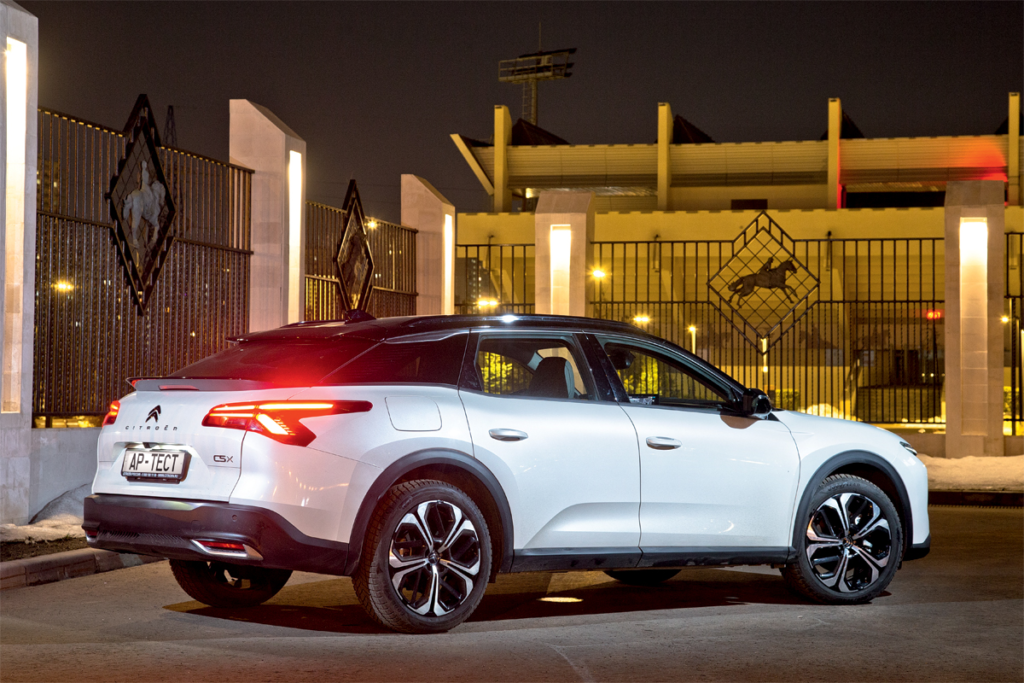
Externally, it’s hard to pinpoint its Chinese origins: a hefty liftback with high thresholds and a plastic contour along the bottom. But don’t be fooled about its off-road capabilities: the clearance is only 161 mm, and it features front-wheel drive exclusively. It’s reassuring that this Citroen still offers visual intrigue, like the unusually concave roof, a feature reminiscent of the last C5 sedan’s indented rear window. Interestingly, there’s no rear wiper or washer, yet it remains perpetually clean, much like the Moskvich 401.
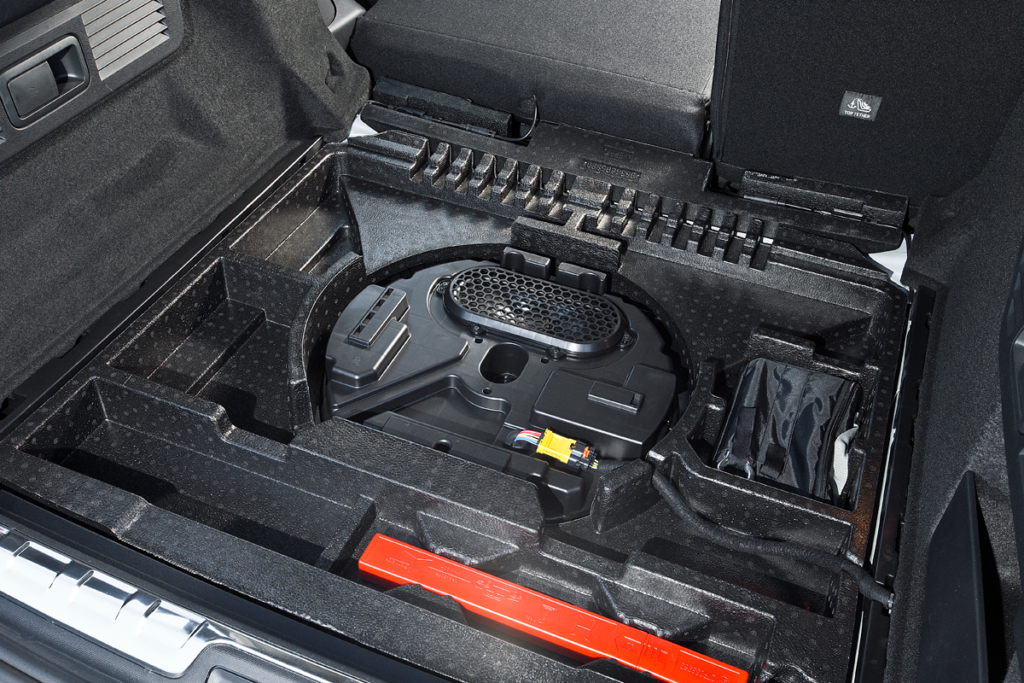
Opening the massive fifth door takes time due to the slow servo, and tall individuals will need to duck. The trunk is spacious with a proper rectangular shape, holding up quite well even against the benchmark Octavia. A notable difference is Skoda’s significantly lower floor, which also accommodates a spare tire—something missing in the Citroen. Despite Citroen’s longer length of 4805 mm compared to Octavia’s 4689 mm, it doesn’t feel substantially more spacious.
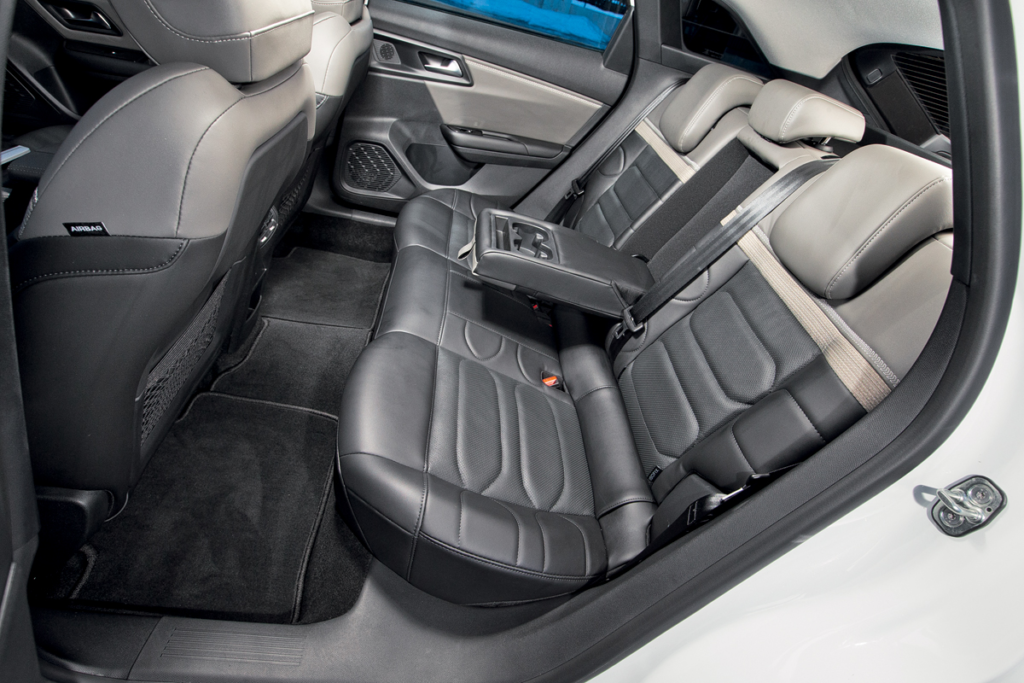
The C5 X also surpasses the Octavia by ten centimeters in wheelbase, offering ample space and comfort to rear passengers. However, additional amenities are sparse—there’s no heated seating here.
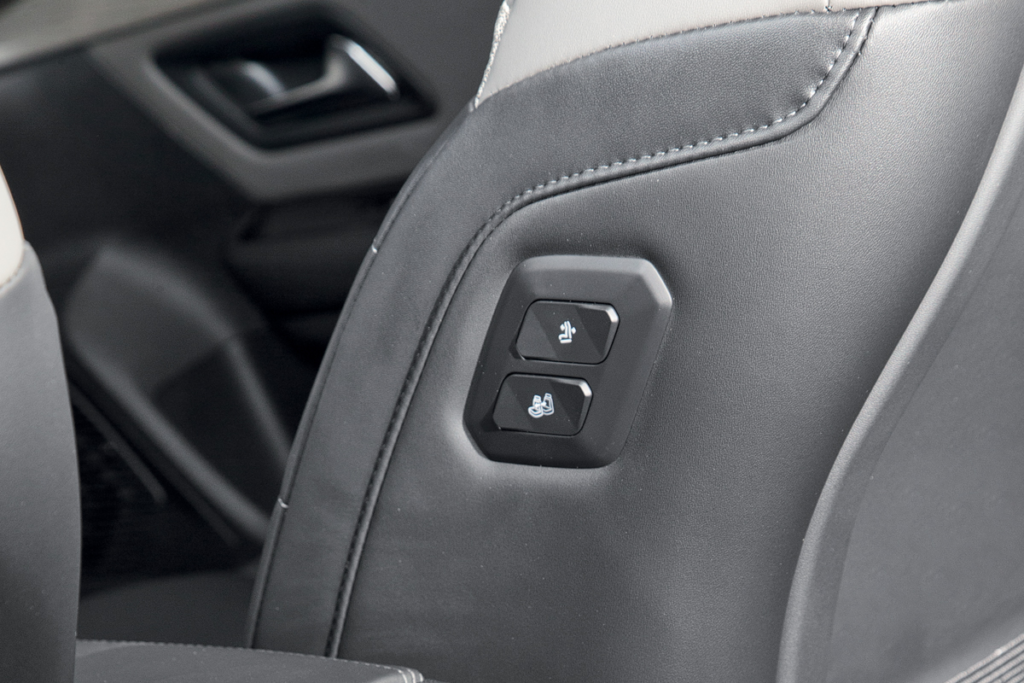
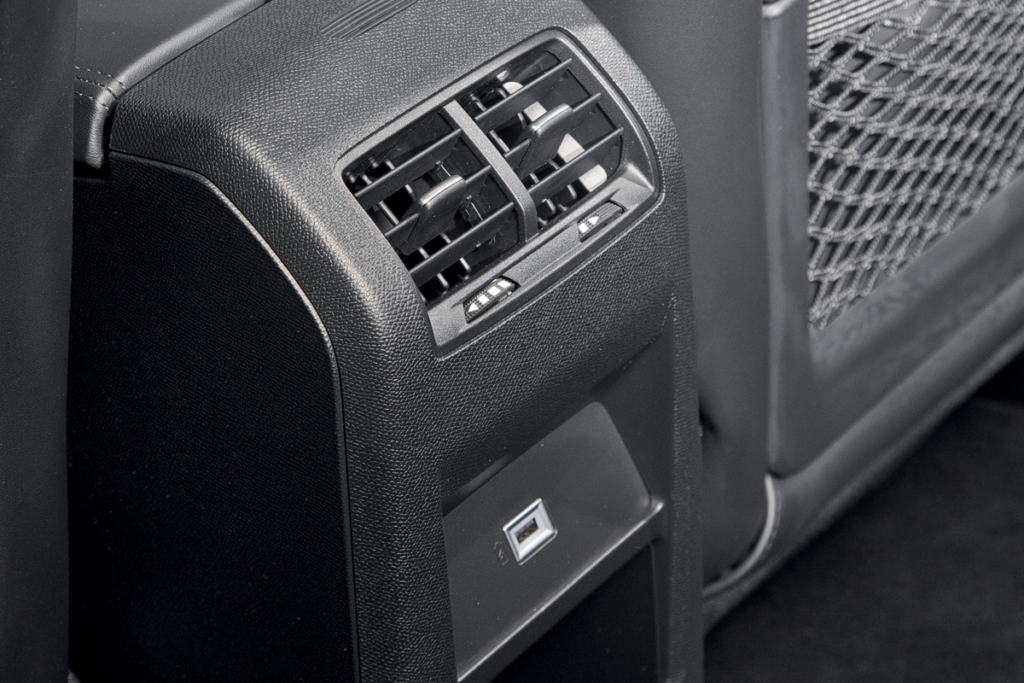
Overall, the C5 X tries to appear premium but is fundamentally simple. The engine—a turbocharged 1.6-liter (175 hp) Prince series that has been refined—is paired with a compact eight-speed Aisin automatic transmission.

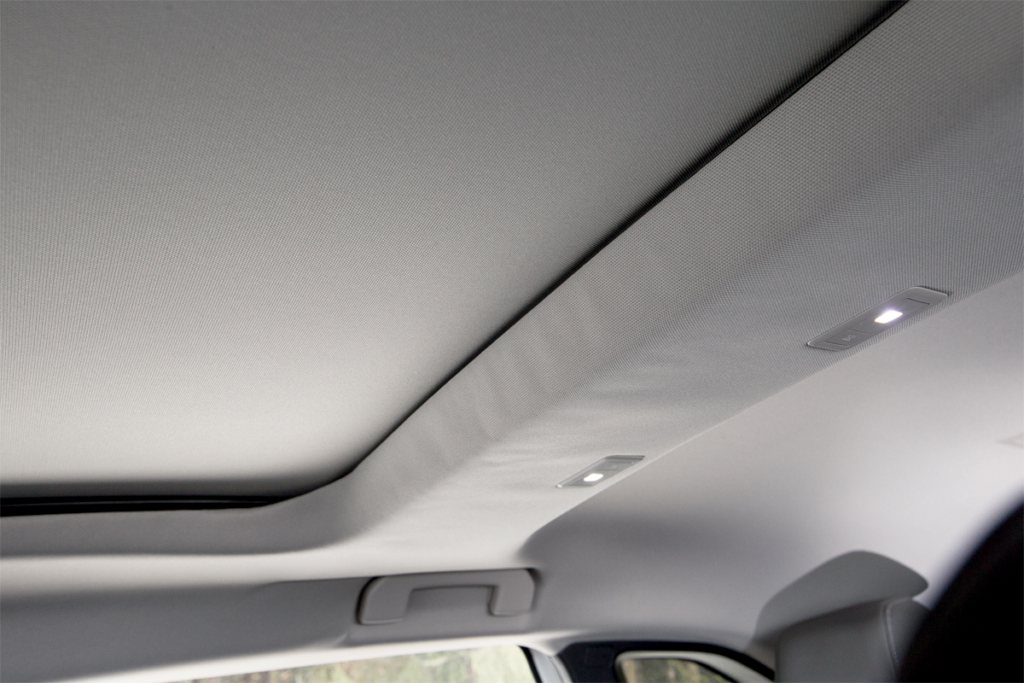
Steering wheel adjustment seemed nonexistent at first due to a sticky mechanism, but with a stronger pull, the wheel adjusts. After climbing over the high threshold and settling into the comfy seat, one still finds themselves reaching for the wheel.


The interior is intriguing, with unconventional decor like the light inserts on the doors, which at first glance seem to be fabric. However, they’re actually plastic. The stitching, shaped like double chevrons, is another stylish touch.

The tiny instrument screen flanked by more engaging visuals is a curious choice. Citroen often experiments with instrument layouts, but this one seems more like a beta version than a final product. However, the head-up display presents information more attractively and clearly.
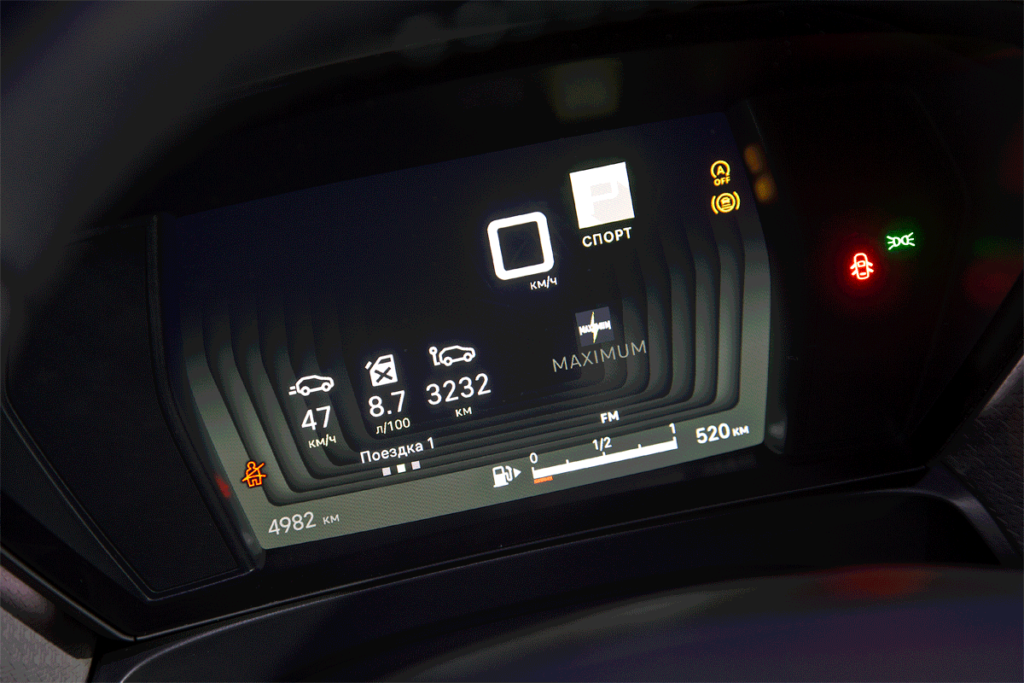

And that electric razor-like feature on the central tunnel? It controls the transmission, similar to what you’d find in a Skoda.

Size-wise, these liftbacks differ significantly, but it’s only really noticeable in the back seat: the Skoda feels less roomy, but overall, there’s ample space. Beyond that, the Octavia begins to methodically accrue points in our evaluation. The driver’s workspace scores well—here, the steering wheel adjusts over a wider range. The instruments are functional, and the media system is stylish and connects better with smartphones.
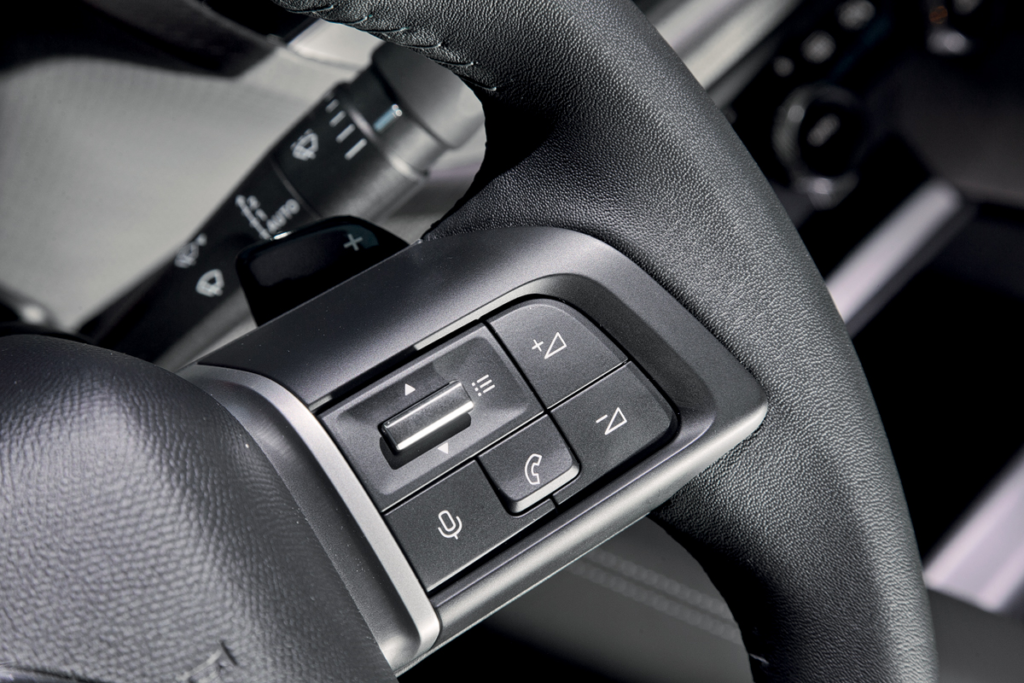
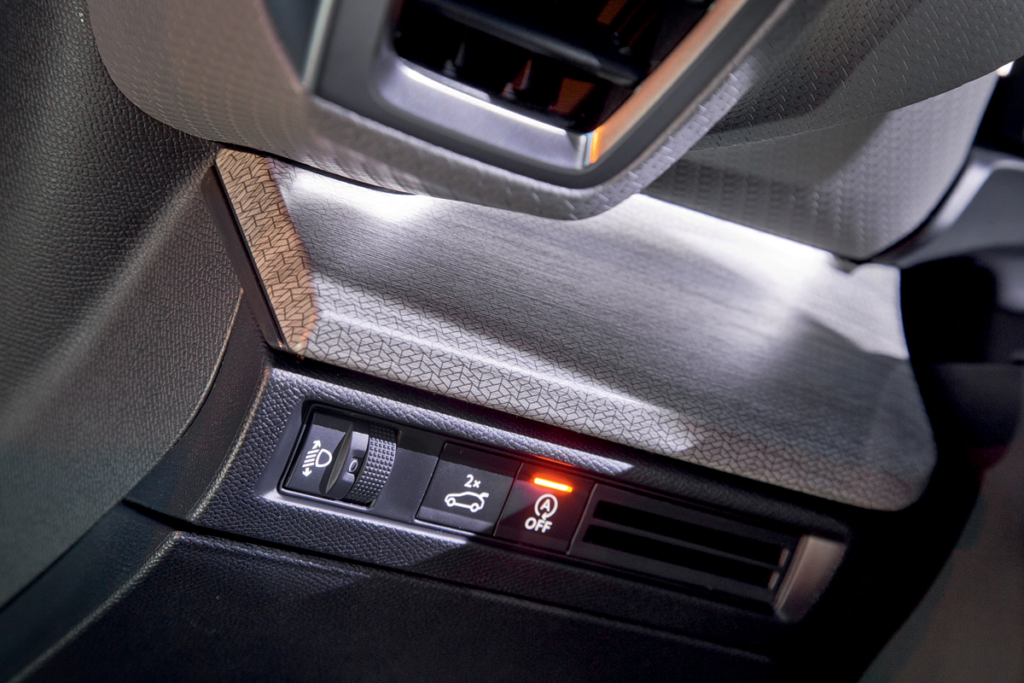
This liftback, bought by our reader Valery last summer for 3.7 million rubles, highlights a stark contrast, as the “official” Citroen is a million more expensive. However, “grey” market dealers offer the same C5s for just three and a half million—a price comparable to the Chinese-made Skoda Octavia. Valery’s model, one of the last assembled in Russia in 2022, had awaited the installation of the ERA-GLONASS system for some time.
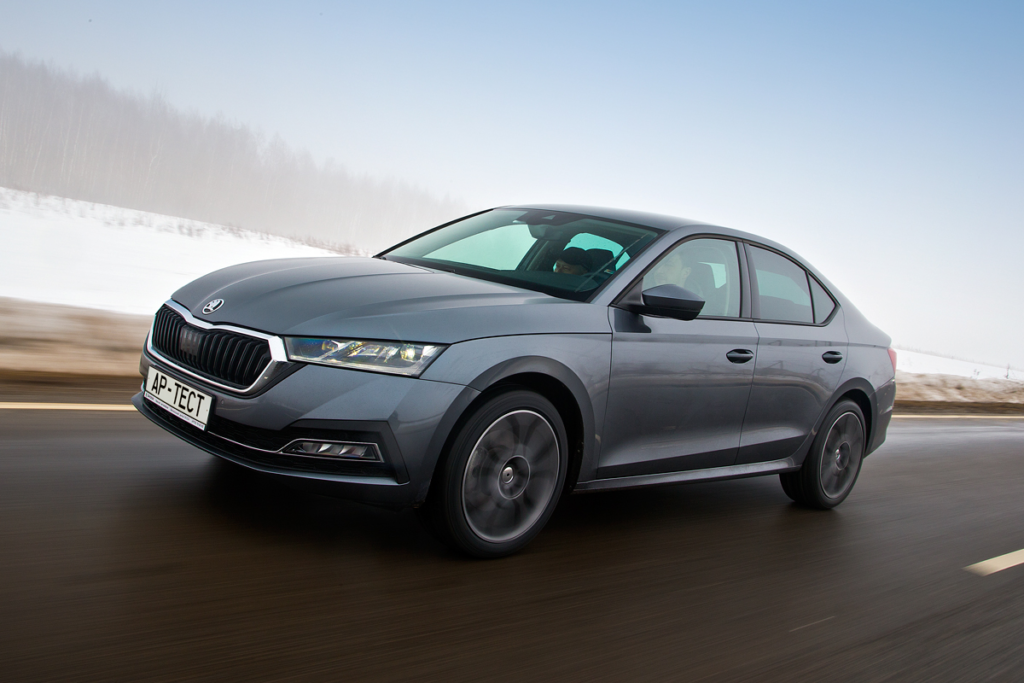
Valery is particularly fortunate since his Octavia comes with a 190 hp two-liter turbo engine and multi-link rear suspension. It’s understood that the road package, better termed for low-speed rather than poor-quality roads, alters its characteristics. On rough patches, this Octavia rides harsher than its European counterparts. The increased clearance, from 134 to 149 mm, helps avoid scraping on snowy ruts with its plastic mudguard. However, the shocks sometimes clunk on rebound, a minor but noticeable drawback.

In an era where stiff and short-travel struts are the norm, the Citroen’s suspension, designed for rough roads, is a refreshing departure. It doesn’t jolt or push but gently carries you over obstacles, ensuring the ride doesn’t abruptly deteriorate due to mechanical failure—there’s simply nothing in the C5 X’s suspension system that could break. The moderate rocking of the car provides a soothing effect, especially when contemplating the unpaid loan for this liftback. Within the quiet cabin—thanks to double-glazed windows and overall decent acoustic comfort—you can calmly consider the ratio of interest payments to the principal amount.

Conversely, the Skoda is noticeably louder. The dominant sounds are a budget tire hum and debris clattering against the wheel arches. Frankly speaking, as a passenger, I’d prefer the Citroen for its quieter ride, but from the driver’s perspective, it’s a matter of debate.
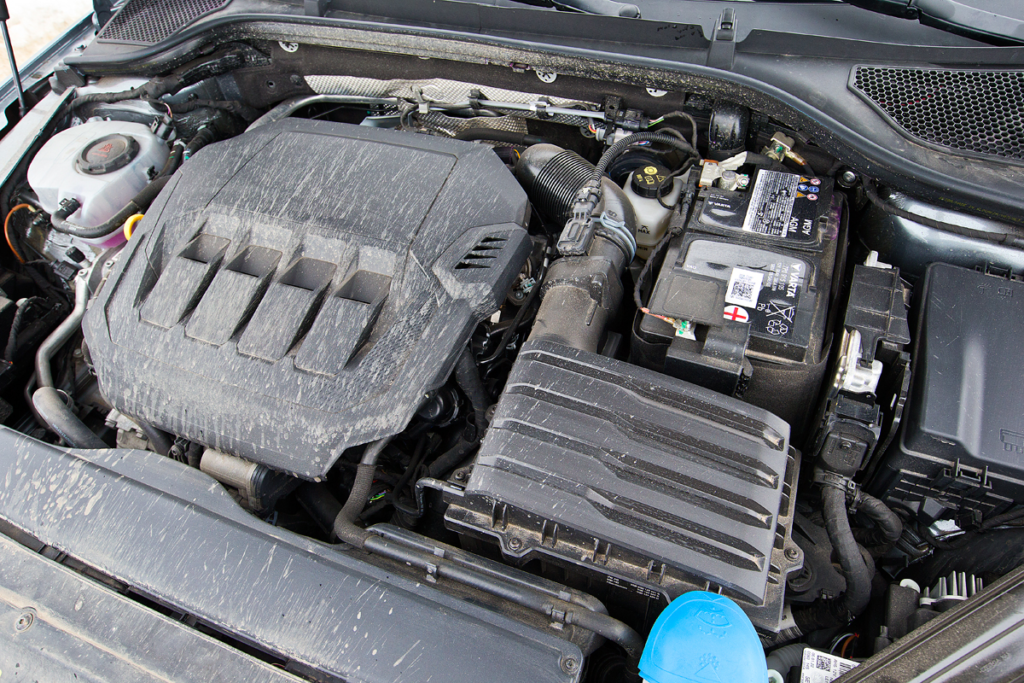
Yes, the Octavia feels livelier in all respects. Its two-liter turbo engine and seven-speed DSG transmission propel it to 100 km/h in just 7.5 seconds, compared to the Citroen’s nine seconds. Skoda excels in responsiveness. The sports mode keeps the engine revved up, making the Octavia the clear favorite for those seeking dynamism and a responsive throttle. However, this generation of Octavias is not yet susceptible to chip tuning—a nostalgia for the “Skoda on stage” days remains, so you must make do with the existing setup.
| Parameter | Citroen C5 X 1.6 THP | Skoda Octavia 2.0 TSI |
|---|---|---|
| 0—50 km/h (s) | 4.1 | 3.0 |
| 0—100 km/h (s) | 9.0 | 7.5 |
| 0—150 km/h (s) | 19.4 | 15.5 |
| 400 m time (s) | 16.2 | 15.5 |
| 60—100 km/h (s) | 5.1 | 4.1 |
| 80—120 km/h (s) | 6.4 | 4.8 |
In standard driving conditions, particularly in urban environments, Skoda displays a notable turbo lag up to about 3000 rpm, after which there’s a burst of acceleration. Otherwise, the driving experience is logical and enjoyable, without the typical jerkiness of robotic transmissions at stops. The DQ381 gearbox, with its control program, allows for a remarkably smooth stop. However, Citroen’s classic Aisin automatic doesn’t perform as smoothly.
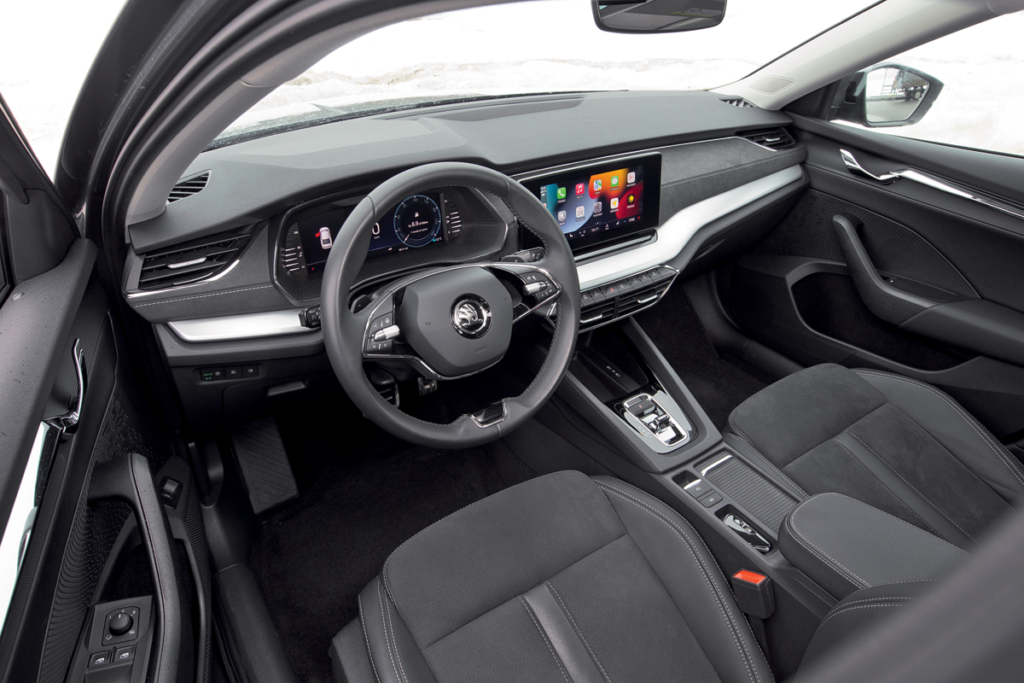


The Citroen’s soft and overly sensitive brake pedal requires heightened attention, and achieving a smooth start is nearly impossible. Even a light touch on the gas pedal causes the car to jerk slightly. This can be particularly irritating in urban settings, especially given the car’s generally modest dynamics. Perhaps the C5 X tries to inject a sense of liveliness with this feature? But even in sports mode, the throttle responses remain measured and calm.
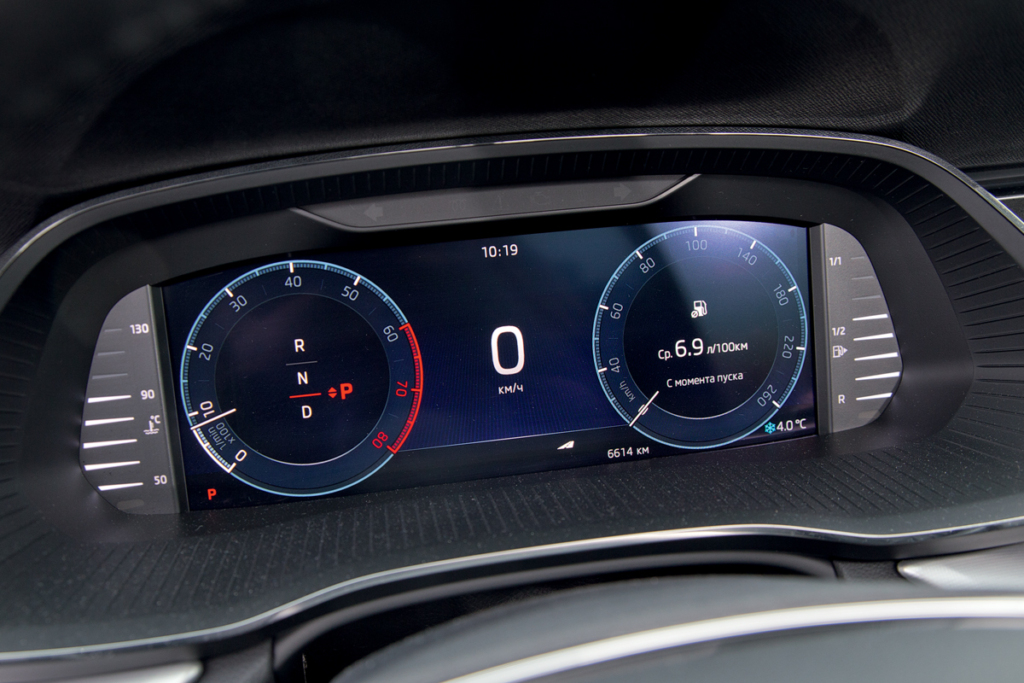
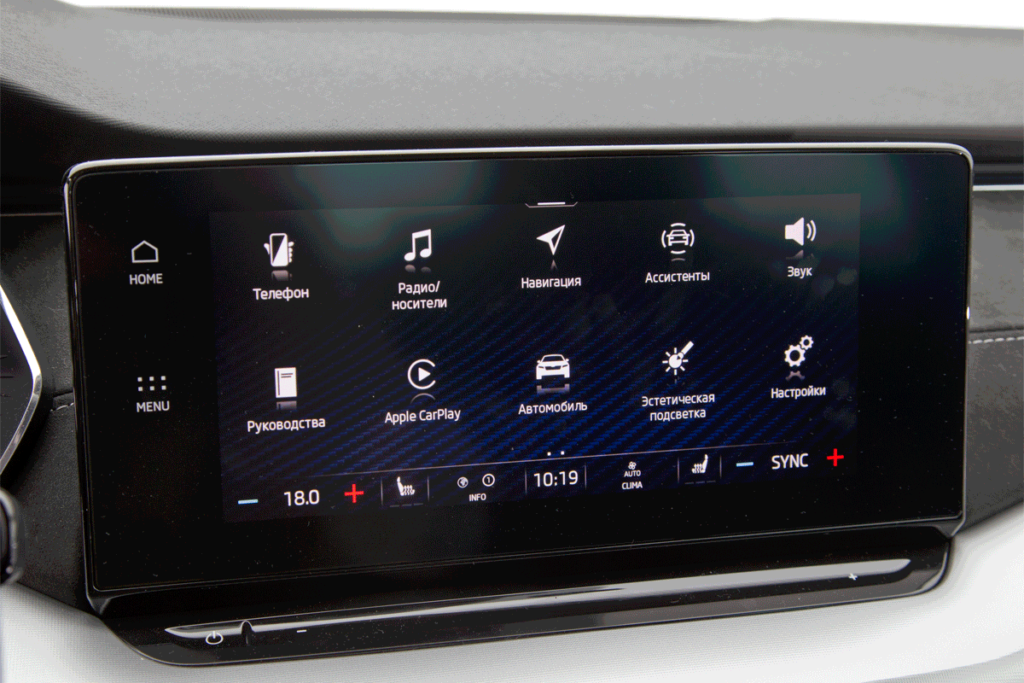
Eliminating this initial jerkiness would enhance the car’s otherwise sophisticated demeanor. The Citroen handles quite pleasantly despite its leisurely steering responses and noticeable body roll, which don’t detract from its ability to feel like a hot hatch on the move. The rear torsion beam isn’t problematic in turns; the C5 X confidently holds its line and plays along with the rear wheels under throttle lift-off. The only noticeable downside of the semi-independent setup manifests on uneven high-speed straights, where individual bumps can jostle the rear off course.

In contrast, the Skoda constantly jostles left and right, influenced partly by the wheels, which are 15 mm wider than standard—a note for all owners of these cars. The steering rack in the Skoda is noticeably sharper than in the Citroen, with lower effort but clearer and quicker responses. However, this mainly enhances the ambiance and the driving sensation, while the behavior in tight turns is similar to that of the Citroen. If only it were equipped with the original springs from the European suspension! This could have elevated the handling ratings.
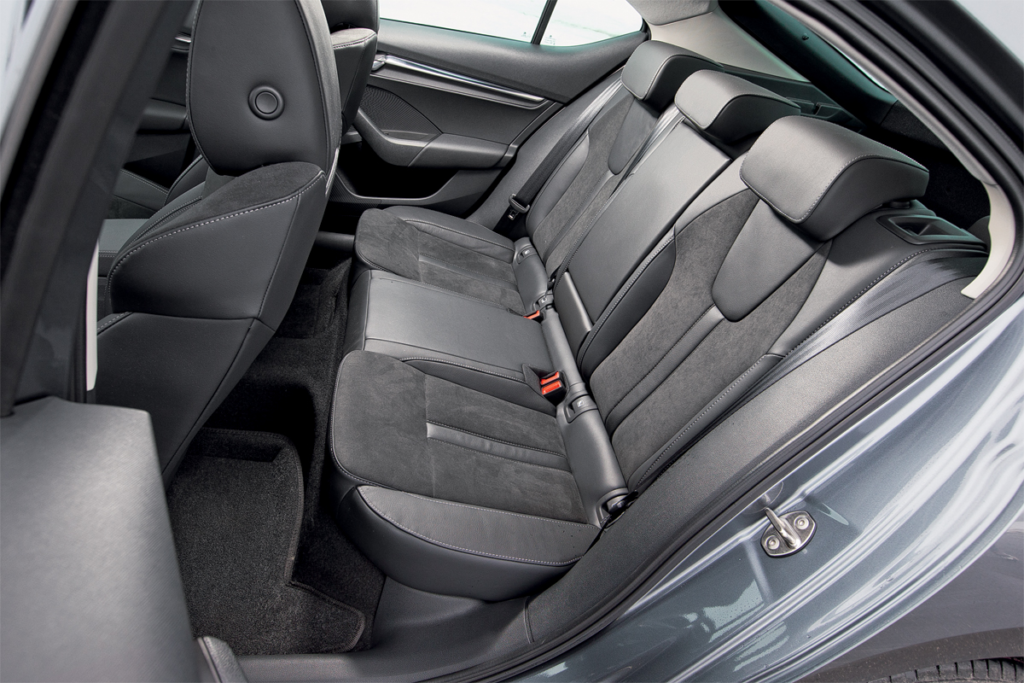
For now, the difference in handling is minimal, as is the overall gap between the two cars. The Citroen C5 X proves to be a very soulful car. Despite its Chinese origins, it retains a trace of the French company’s historic flair. Its character is mature and its style recognizable. Adjusting the initial throttle response would make it near perfect. However, its price point at a minimum of 4.6 million rubles is not competitive.
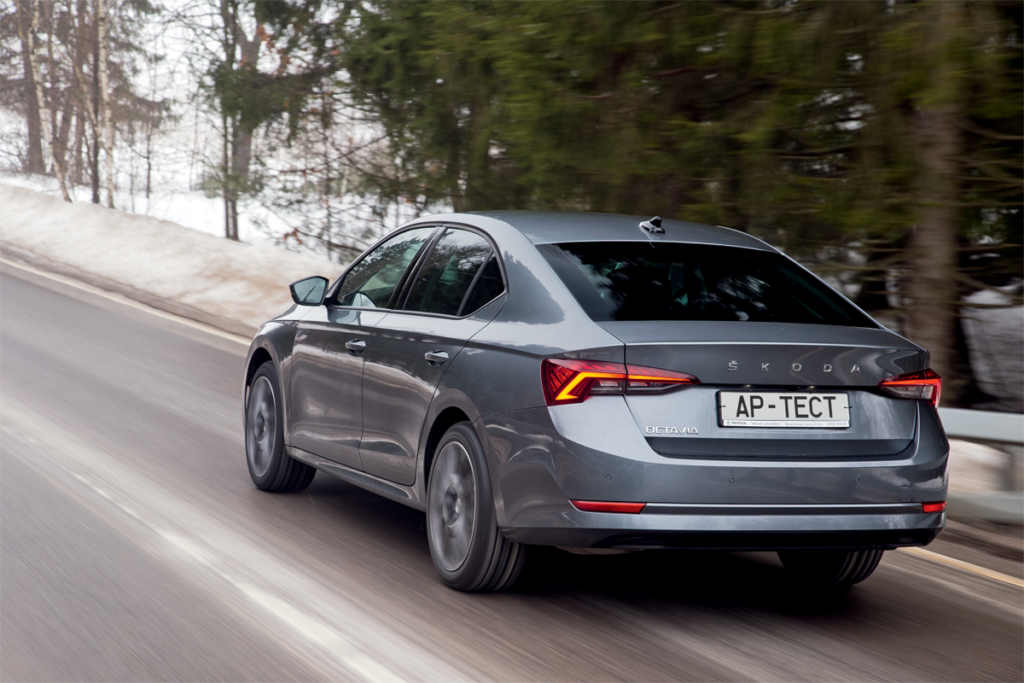
The new Octavia A8 generation is also available. Although not the same liftback as Valery’s, the Chinese Octavia Pro features original bumpers, almost like the RS versions, a 1.4-liter turbo engine (150 hp) paired with a DSG, and importantly, a 44 mm extended wheelbase. These cars are priced from 3.3 million rubles, though they are rare on the streets and offerings are limited.

A wave of Chinese crossovers with flashy lights, screens, and illuminations has completely occupied the Octavia’s niche. Moreover, should Skoda re-enter the market with a warranty and a broader range of vehicles, it’s uncertain whether customers would switch back from the Xs and various Changan models to these liftbacks. After all, noodles are incredibly nourishing and effortless to prepare.

Trunk Space
Both trunks are spacious and convenient. Skoda requires lifting cargo higher but compensates with numerous pockets, hooks, and a spare tire in the underfloor.

Citroen C5 X

Skoda Octavia
Visibility
It seems the mirror designer might have moved from Skoda to Citroen: one shape—and the same issues due to insufficient surface area and narrowing toward the outer edge. Citroen’s camera offers a clearer focus distance, and the surroundings are more visible on the larger screen.
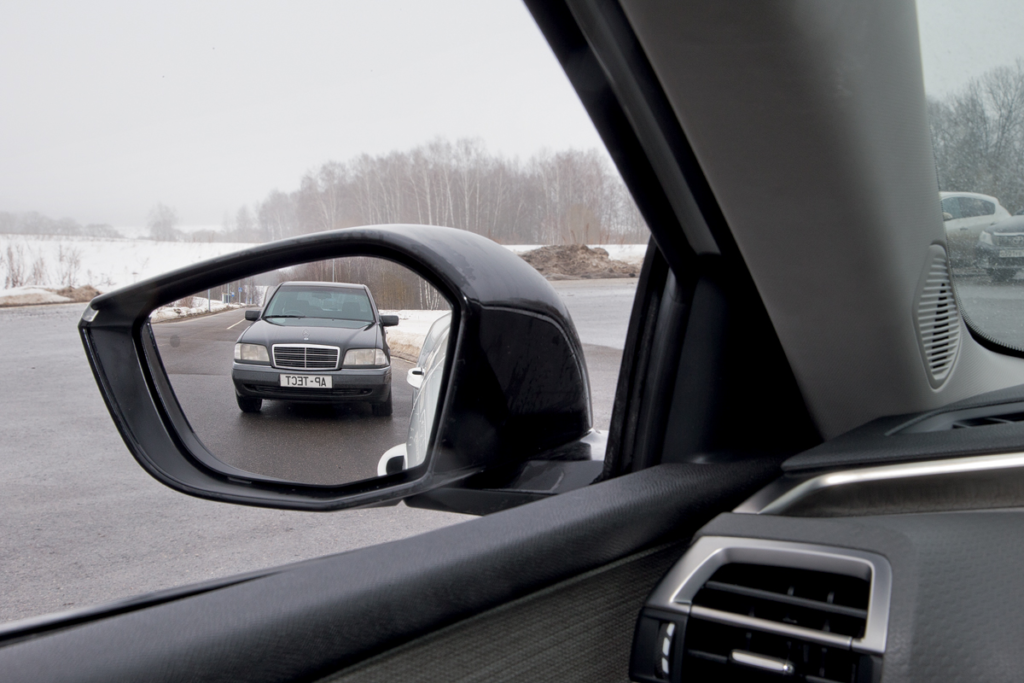
Citroen C5 X
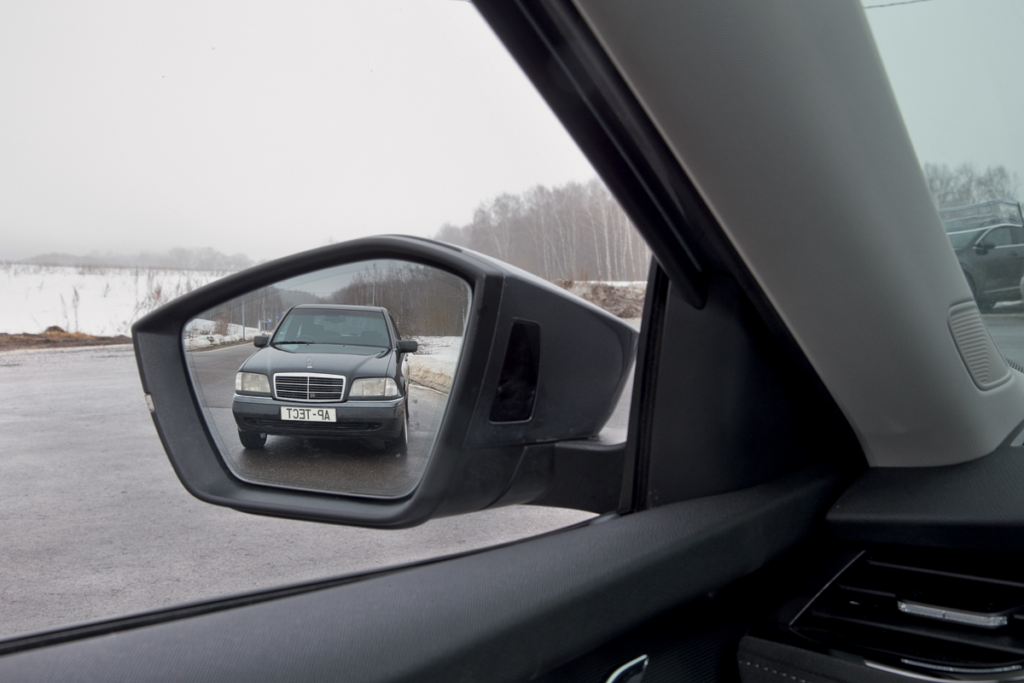
Skoda Octavia
Dimensions, weight and weight distribution along the axes
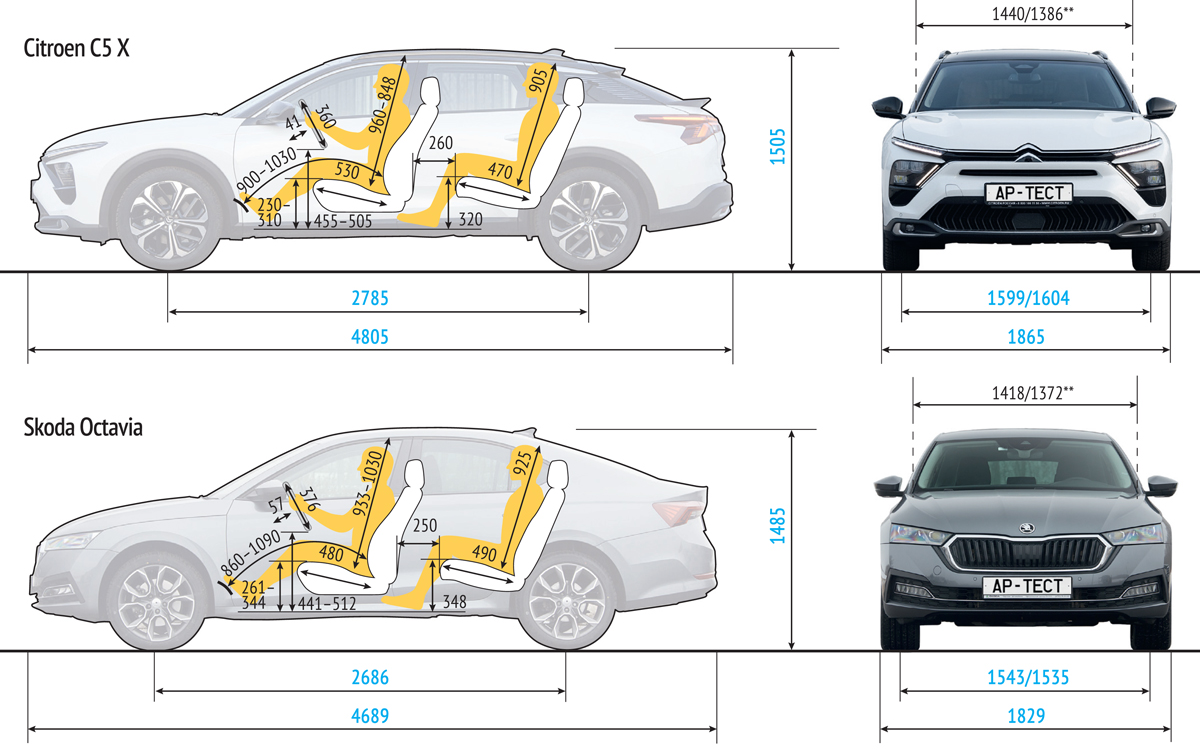
Manufacturers’ data are highlighted in blue/Autoreview measurements are highlighted in black. Dimensions are in millimeters.
*Actual vehicle weight without driver, with full fuel tank and full process fluids
**For right rear seat
**Interior width at shoulder level in the first/second row of seats.
The detailed specification comparison for the Citroen C5 X and Skoda Octavia:
| Specification | Citroen C5 X | Skoda Octavia |
|---|---|---|
| Curb Weight (kg) | 1505 | 1340 |
| Gross Weight (kg) | 1915 | 1840 |
| Trunk Volume (L) | 545—1640* | 578—1533* |
| Engine Type | Gasoline, direct injection, turbocharged | Gasoline, combined injection, turbocharged |
| Engine Placement | Front, transverse | Front, transverse |
| Cylinders | 4, inline | 4, inline |
| Displacement (cc) | 1598 | 1984 |
| Max Power (hp/kW/rpm) | 175/129/5500 | 190/140/4200—6000 |
| Max Torque (Nm/rpm) | 250/1750—4500 | 320/1500—4200 |
| Transmission | Automatic, 8-speed | Automated, dual-clutch, 7-speed |
| Drive Type | Front-wheel drive | Front-wheel drive |
| Front Suspension | Independent, spring, McPherson | Independent, spring, McPherson |
| Rear Suspension | Semi-independent, spring | Independent, spring, multi-link |
| Front Brakes | Disc, ventilated | Disc, ventilated |
| Rear Brakes | Disc | Disc |
| Standard Tire Size | 205/55 R19 | 205/55 R17 |
| Top Speed (km/h) | 221 | 229 |
| Acceleration 0—100 km/h (s) | 8.9 | 7.5 |
| Fuel Consumption (L/100 km) | City: 7.6, Highway: 5.3, Combined: 6.4 | City: 7.8, Highway: 4.9, Combined: 6.0 |
| Fuel Tank Capacity (L) | 51 | 45 |
| Fuel Type | Gasoline AI-95 | Gasoline AI-95—98 |
*With rear seats folded
Photo: Dmitry Piterskiy | Skoda
Expert group: Yaroslav Tsyplenkov
This is a translation. You can read the original article here: Лапша или булки? Сравниваем лифтбеки Citroen C5 X и Skoda Octavia

Published November 14, 2024 • 10m to read





